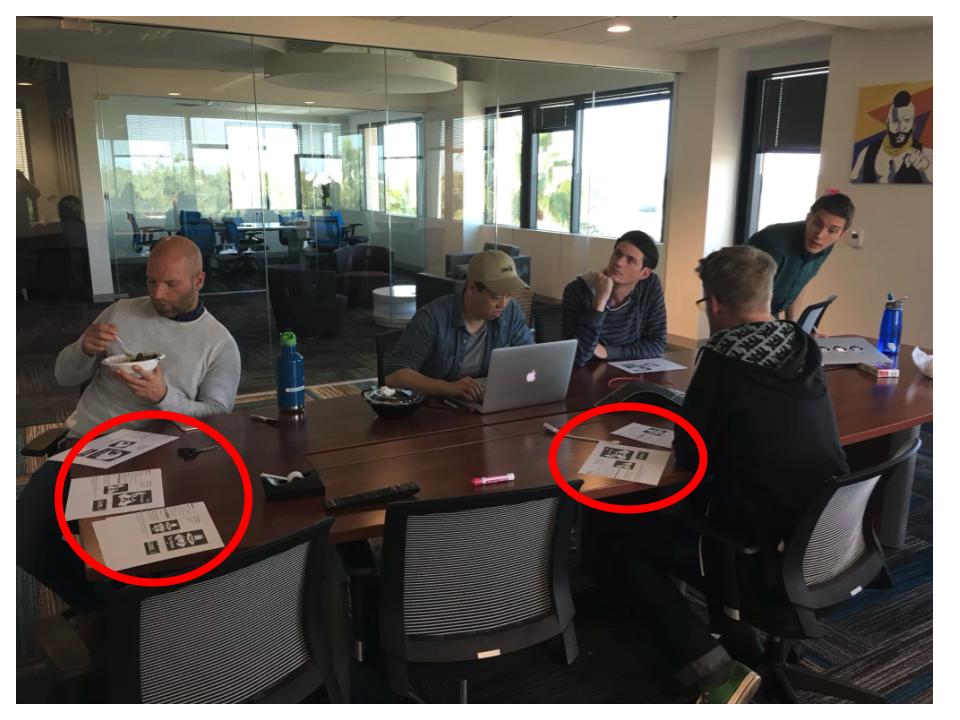The Courageous Learners
For those who work in technology, there’s no doubt that there is an abiding interest in and need for continuous self-improvement in a range of skills. There is so much to learn, and there’s more all the time. And frankly technologists - designers, engineers, testers, whatever their role - tend to be pretty good at learning.
Our best leaders in technology role model and champion this willingness to experiment rapidly, learn, and even make friends with failure and risk by fighting for safe workplaces.
Group Learning Is Weird
Group learning, however, is a horse of a different color.
When a technology team works together to deliver value and solve problems, there is almost always a clash between the skills and assumptions of successful individual learners and the skills required for highly successful teamwork.
So how do we need to shift things to resolve the clash? We need radical new insights for the group learning context.
Insight #1: Nobody Needs to Be a Better Person
As individuals, we feel the driving need to learn more, to improve our habits, to listen to the wisdom of mentors, change, and grow accordingly. This desire for constant learning is usually what drew us to the demanding field of technology.
Paradoxically, groups must throw much of this focus on individual improvement out the window. If you are here, if you’ve made it to this team, as an individual, you are presumed excellent.
“We go to a great deal of trouble to hire winners, and then they get inside our company and we treat them like losers.” - Ken Blanchard, 19901
Ken Blanchard put it in extreme terms, but we can learn from even a mild version of this. Look not to fixing individuals, but look to improving the systems of collaboration that tie their individual excellences together.
The individuals will always know the most about what is the most urgent for them to learn personally; that’s their business. As a coach I like to say, “Personal growth is an extracurricular activity”.
Now for some of you, hazards and objections are popping to mind. This may seem to be an overly optimistic stance. And I’m tempted to address each of the variations in objections that I commonly hear when I propose this notion that any improvement in our team process must be predicated on nobody needing to become a better person for it to work.
Instead of addressing objections to it, I simply want to double down and underscore the proposition: by making this a premise, you are protectively locked into a systems-eye-view of the team and reap the enormous insights gained from dwelling at that altitude. You no longer need to fret about “personality conflicts” or plumb others’ intentions and psychology. By being here on this team, your colleagues are assumed to be rooting for each other’s success.
Obviously anything approaching truly dangerous behavior such as criminality, harassment, racism, sexism, and the like are appropriate for law enforcement or HR to resolve, not team members.
You’ll notice, if you make this shift, that focusing on improving the system over improving individuals simply makes the team feel like a safer place to learn and take risks - Make Safety a Prerequisite of course being one of the four principles of Modern Agile.
Don’t try to change or fix individual team members. Change your team’s culture. You’ve hired the best. Now help weave them together into effective teams.
Insight #2: Learning Must Be Tiny
Learning and improvement is a habit to build. Like anything that is awkward or difficult for a team to do (CI/CD anyone?), if we want to improve it, we find a way to do it as often as possible and to do it tiny.
I’ve been a huge booster of retrospectives my entire career - but most teams new to them endure retrospectives that are too big, too long, too formalized, and therefore do them too infrequently (“So much planning is involved!” they say, or “We don’t have time for another retrospective there’s too much real work to do!”).
Don’t get me wrong - a big retrospective at the end of a 6 month or 1 year project can produce incredible learnings. But if that’s your first retrospective it’s going to be difficult to harvest as much value as you would if you did “micro-retros” at the end of every day. Or every half-day. Or every hour. Or even every half-hour! How often can you harvest small learnings for your team? I’ve coached the 25-minute pomodoro cadence on many teams to trigger “micro-retros” where my team asks “What did we notice? What’s a small thing we could improve - about our Tools, Interactions, Environment, Process? What’s a new working agreement we could make about that?” The results have been fantastic.
That’s right - no planning, no activity, just a brief 1-5 minute chat about how things went, a tiny bit of learning, and then we dive into the next timed work session.
What’s amazing is these little learning harvests done near continually can add up far more than you would think, much like the “fractions of a penny” from this scene in the movie Office Space.
And of course, when you have your big, formal, highly planned retrospectives packed with activities (such as at the end of a project or other milestone) you’ll be really good at participating in them.
Insight #3: Working Agreements Are The Ever-Evolving Rules of Play
Once you’ve had an insight on how to improve your team, check it in to your team’s cultural repository by creating a working agreement. Find somewhere to document that agreement and post it so all the team can see it easily during work.
These agreements on how we’ll work together day to day can pack a huge punch. Remember the question from the last lesson - “What did we notice in our last 25 minutes? What’s something that’s not quite working - about our Tools, Interactions, Environment, Process? What’s a new working agreement we could make about that?”
Teams I coach will often decide to have a special area for listing out current working agreements, and a history for ones that no longer apply or are no longer necessary. Consider only having 5-7 active Working Agreements in flight that address current needs, and regularly review the ones that the team has made into a habit and doesn’t need a reminder for. They can go in the historical record.
Insight #4: Awesome Games Are Awesome Collaborations
You may or may not be into playing card games, board games, computer games, or the like. I can be quite picky about the games I enjoy playing. But there’s no doubt that well-designed games have a lot in common. To make things simple, let’s stick with physical games. Things you’ll often see:
- Bounded space with tape, chalk, or other markers
- Cards, chits, easy-to-change ways of documenting the current state of play
- Formal turn taking for when you can talk, move, act
- Colorful and pleasing artifacts to move and interact with
I’m sure there’s more. But you’ll notice right away that, on technology teams, the most effective information radiators often have index cards tacked up with pins or magnets, kanban boards often have taped lanes delineating the different stages of work. In skillful mob programming, roles of driver and navigator can be quite formal.
All else being equal, a well-designed game makes for enjoyable collaborative experiences. Why should work be different? I encourage you to play lots of games and explore the different artifacts, agreements, and structures that make them enjoyable flow experiences. I offer up my own work on the Mob Programming Role Playing Game as an example.

Effective retrospective activities can also be rich sources of ideas, and are often fun games in and of themselves. For example, check out the activities at the retromat site.
Walking Into the Sunrise
There’s always more we could say about making awesome learning teams, but this is a solid start.
In short, walk away from conventional thinking of what it means to “work hard”, or be “a team player”. Walk away from finger pointing and blame finding. Instead, start walking towards the creation of flow experiences in collaboration with the rest of your team.
You may find that “personality conflicts” and other team snafus tend to evaporate as you focus on flow over obligations.
Learn to weave excellent people together and the people themselves will blossom.
Notes
-
Heard by Diana Larsen in Portland, OR when assisting Ken Blanchard at public event ↩





